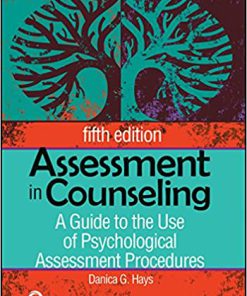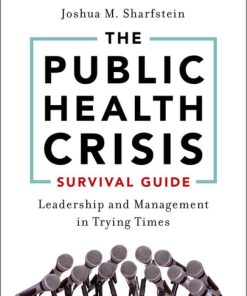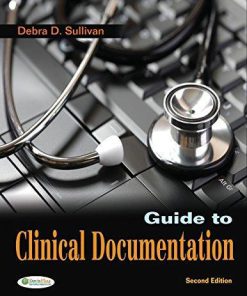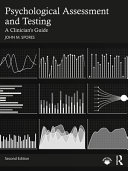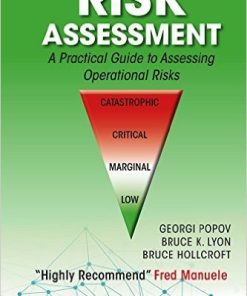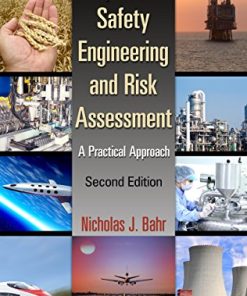The Suicidal Crisis Clinical Guide to the Assessment of Imminent Suicide Risk 2nd Edition by Igor Galynker 0197582729 9780197582725
$50.00 Original price was: $50.00.$25.00Current price is: $25.00.
The Suicidal Crisis: Clinical Guide to the Assessment of Imminent Suicide Risk 2nd Edition by Igor Galynker – Ebook PDF Instant Download/DeliveryISBN: 0197582729, 9780197582725
Full download The Suicidal Crisis: Clinical Guide to the Assessment of Imminent Suicide Risk 2nd Edition after payment.
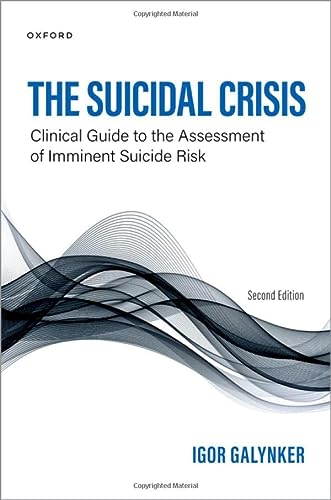
Product details:
ISBN-10 : 0197582729
ISBN-13 : 9780197582725
Author : Igor Galynker
Most people who die by suicide see a clinician prior to taking their lives. Therefore, one of the most difficult determinations clinicians must be able to make is whether any given patient is at risk for suicide in the immediate future. The Suicidal Crisis, Clinical Guide to the Assessment of Imminent Suicide Risk, is the first book written specifically to help clinicians evaluate the risk of such imminent suicidal behavior.The Suicidal Crisis is an essential work for every mental health professional and for anyone who would like to have a framework for understanding suicide. Written by master clinician Dr. Igor Galynker, the book presents methods for a systematic and comprehensive assessment of short-term suicide risk and for conducting risk assessment interviews in different settings.Dr. Galynker describes suicide as an attempt of a vulnerable individual to escape an unbearable life situation, which is perceived as both intolerable and inescapable. What sets the Suicidal Crisis apart from the other books of its kind is its sharp focus on those at the highest risk.
The Suicidal Crisis: Clinical Guide to the Assessment of Imminent Suicide Risk 2nd Table of contents:
1. Introduction and Overview
The Ticking Time Bomb of the American Suicide Health Crisis
What Is Imminent Suicide?
Long-Term versus Imminent Suicide Risk: Who versus When
Lack of Tests for Suicide Prediction
The Problem of “Non-Disclosure”
Suicide Crisis Syndrome
The Narrative-Crisis Model of Suicide
One-Informant versus Multi-Informant Suicide Risk Assessments
Using Clinicians’ Emotions in Suicide Prevention
Risk Stratification versus Clinical Judgment
How To Use The Suicidal Crisis
A Roadmap for Comprehensive Assessment
References
2. Psychological Models of Suicide
Introduction
Historical Perspective
Shneidman’s Theory of Psychache
Suicide as Escape from Self
The Cry of Pain/Arrested Flight Model
Cognitive Vulnerability Model
Fluid Vulnerability Model
Beck’s Diathesis-Stress Model
Mann’s Stress-Diathesis Model
Joiner’s Interpersonal Model
Thwarted Belongingness
Perceived Burdensomeness
Acquired Capability
Opponent Processing
O’Connor’s Integrated Motivational-Volitional Model of Suicide
Klonsky’s Three-Step Theory of Suicide
Summary
References
3. The Narrative-Crisis Model of Suicide
Introduction
Trait versus State Risk Factors
Static versus Dynamic Risk Factors
The Narrative-Crisis Model: Overview
Long-Term Risk Factors
The Suicidal Narrative
The Suicide Crisis Syndrome
The Long-Term Risk Component
Stressful Life Events
The Suicidal Narrative: The Subacute Component
The Suicide Crisis Syndrome: The Acute Component
Model Flexibility: Narrative-Driven versus Crisis-Driven Suicidal Behaviors
Conclusion
References
4. Long-Term or Chronic Risk Factors
Demographics
Gender and Age
Sexual Orientation and Identity
Race, Ethnicity, and Geographic Region
Psychological Factors
Impulsivity
Hopelessness and Pessimism
Perfectionism
Fearlessness and Pain Insensitivity
Attachment Style
Historical Factors
History of Mental Illness
History of Suicide Attempts
Suicide in the Family
Suicide Exposure and Practicing
Childhood Trauma
Parenting Style
Social Factors
Cultural Attitudes and Immigration Status
Moral, Philosophical, and Religious Objections
Suicide Clusters
COVID-19 Pandemic
Case Examples
Interview Algorithm
Case 1: High Risk for Imminent Suicide
Case 2: Moderate Risk for Imminent Suicide
Case 3: Low Risk for Imminent Suicide
Test Case 1
References
5. Stressful Life Events
Introduction
Work and Financial Hardship
Economic Hardship
Business or Work Failure
Case 4
Loss of Home
Case 5
Case 6
Relationship Conflict
Romantic Rejection
Case 7
Intimate Relationship Conflict
Case 8
Parents in Conflict with Children
Case 9
Serious Medical Illness
Recent Diagnosis
Case 10
Prolonged and Debilitating Illness
Case 11
Acute and Chronic Pain
Case 12
Serious Mental Illness
Recent Diagnosis
Case 13
Recent Hospitalization
Case 14
Illness Exacerbation and Acute Episodes
Case 15
Medication Changes: Initiation, Discontinuation, or Nonadherence
Case 16
Recent Suicide Attempt
Case 17
Attempt Lethality
Case 18
Recent Substance Misuse
Drug and Alcohol Use Disorder
Acute Alcohol Intoxication and Recent Drug Use
Case 19
Alcohol and Drug Withdrawal
Case 20
Adolescents
Children in Conflict with Parents
Case 21
Ongoing Childhood and Adolescent Abuse and Neglect
Bullying
Case 22
Case 23
Internet and Social Media
Screen Time
Internet Addiction
Cyberbullying
COVID-19 Pandemic
References
6. Suicidal Narrative
The Seven Stages of the Suicidal Narrative
Stage 1: Unrealistic Life Goals
Case 24
Case 25
Stage 2: Entitlement to Happiness
Case 26
Case 27
Stage 3: Failure to Redirect to More Realistic Goals
Case 28
Case 29
Stage 4: Humiliating Personal or Social Defeat
Case 30
Case 31
Stage 5: Perceived Burdensomeness
Case 32
Case 33
Stage 6: Thwarted Belongingness
Case 34
Case 35
Stage 7: Perception of No Future
Case 36
Case 37
Constructing the Suicidal Narrative
Probing the Suicidal Narrative: An Interview Algorithm
Case Examples
Case 38: High Risk for Imminent Suicide
Case 39: Moderate Risk for Imminent Suicide
Case 40: Low Risk for Imminent Suicide
Test Case 2
References
7. Suicide Crisis Syndrome
Distinction between Chronic Long-Term and Acute Short-Term Suicide Risk
Suicide Warning Signs
Suicidal Ideation and Suicide Intent
Suicidal Ideation
Suicide Intent and Plan
Case 41
Case 42
Suicide Crisis Syndrome
SCS Diagnostic Structure
Clinical Utility of the SCS
Suicide-Specific Modifiers for SCS
Suicide Crisis Syndrome Criteria and Symptoms
Criterion A: Frantic Hopelessness/Entrapment
Case 41—Continued
Case 42—Continued
Criterion B1: Affective Disturbance
Case 41—Continued
Case 42—Continued
Criterion B2: Loss of Cognitive Control
Case 41—Continued
Case 42—Continued
Criterion B3: Hyperarousal
Case 41—Continued
Case 42—Continued
Criterion B4: Acute Social Withdrawal
SCS Assessment Algorithm
The Full SCS Assessment
The One-Minute Assessment
Case Examples—Continued from Chapter 6
Case 38: High Risk for Imminent Suicide—Continued
Case 39: Moderate Risk for Imminent Suicide—Continued
Case 40: Low Risk for Imminent Suicide—Continued
Test Case 3
References
8. Emotional Response to Suicidal Patients in the Assessment of Imminent Suicide Risk
Introduction
The Need for New Approaches in Risk Assessment
Clinician’s Emotional Responses to Suicidal Patients and Their Underlying Mechanisms
Experimental Evidence for Clinician’s Emotional Responses
Clinicians’ Defense Mechanisms in Psychotherapy with Suicidal Patients
Reaction Formation
Case 43
Repression
Case 44
Turning against the Self
Case 45
Projection
Case 46
Denial
Case 47
Rationalization
Case 58
Clinicians’ Pattern of Emotional Response
From Rescue Fantasy to Helplessness and Anger
Case 49
Countertransference Love
Case 50
Countertransference Hate
Clinicians’ Conflicting Emotional Responses in the Prediction of Imminent Suicide
Relevance of Clinician Emotional Response in Clinical Practice
A Predictive Factor in Suicide Risk Assessment
How to Appraise the Emotional Response
Incorporating Clinicians’ Emotional Responses in Patient Suicide Risk Assessment—A Quantitati
A Practical Method for Assessing One’s Emotional Response
Case 51
Case Examples
Case 52: High Risk for Imminent Suicide—Reaction Formation
Case 53: High Risk for Imminent Suicide—Repression and Denial
Case 54: Low Risk for Imminent Suicide
Conclusion
References
9. Conducting Short-Term Risk Assessment Interviews
Comprehensive Short-Term Risk Assessment Outline
Long-Term Risk Factors
Stressful Life Events
Suicidal Narrative
Suicide Crisis Syndrome
Suicidal Ideation, Intent, and Plan
Preliminary Risk Assessment
Clinician’s Emotional Response
Final Risk Assessment
Suicidal Ideation and Intent: Self-Report and Its Limitations
Development and Use of Suicide Risk Assessment Instruments
Short-Term Risk Assessment Instruments
Risk Assessment Interview Strategies
Comprehensive Interview
Case 55: Comprehensive Short-term Risk Assessment Interview Example
The Brief MARIS Interview
The MARIS Interview Strategy
Case 56: Brief MARIS Interview Example
Expanded MARIS Interview
Case 57: Expanded MARIS Interview Example
The Case of Eerie Calm
Case 58
Appendix A: The Suicide Crisis Inventory-2 (SCI-2)
Subscales (Dimensions)
Appendix B: The Modular Assessment of Risk for Imminent Suicide (MARIS-2)
Part 1: Self-Report SCI-SF
Part 2: Clinician Assessment TRQ-SF
Appendix C: Suicide Crisis Syndrome Checklist (SCS-C)
References
10. The Narrative-Crisis Model of Suicide as a Framework for Suicide Prevention
Introduction
Overview of the Narrative-Crisis Model
Empirical Support for the Narrative-Crisis Model
Utilizing the Narrative-Crisis Model as a Framework for Clinical Intervention
Lethal Means Counseling
Treatment of the Suicide Crisis Syndrome
Treatment of the Suicidal Narrative
Stress Management
Digital Interventions
Long-Term Risk Factors/Trait Vulnerabilities
Cultural Considerations
African Americans
Hispanics
American Indians/Alaskan Natives
Asian Americans
Cultural Competence
Implications for Future Research and Clinical Practice
People also search for The Suicidal Crisis: Clinical Guide to the Assessment of Imminent Suicide Risk 2nd:
how long does suicidal crisis last
how long do most suicidal crisis last
the suicidals
the suicidal thoughts workbook
the suicidal thoughts are back
Tags: The Suicidal Crisis, Clinical Guide, the Assessment, Imminent Suicide Risk, Igor Galynker
You may also like…
Politics & Philosophy - Politics
The Public Health Crisis Survival Guide 2nd Edition Joshua M. Sharfstein
Biology and other natural sciences - Human Biology
Power, Sex, Suicide: Mitochondria and the Meaning of Life 2nd Edition Nick Lane
Uncategorized
Psychology - Clinical Psychology
Psychological Assessment and Testing: A Clinician’s Guide 2nd Edition
Uncategorized
eTextbook 978-1118911044 Risk Assessment: A Practical Guide to Assessing Operational Risks
Uncategorized




